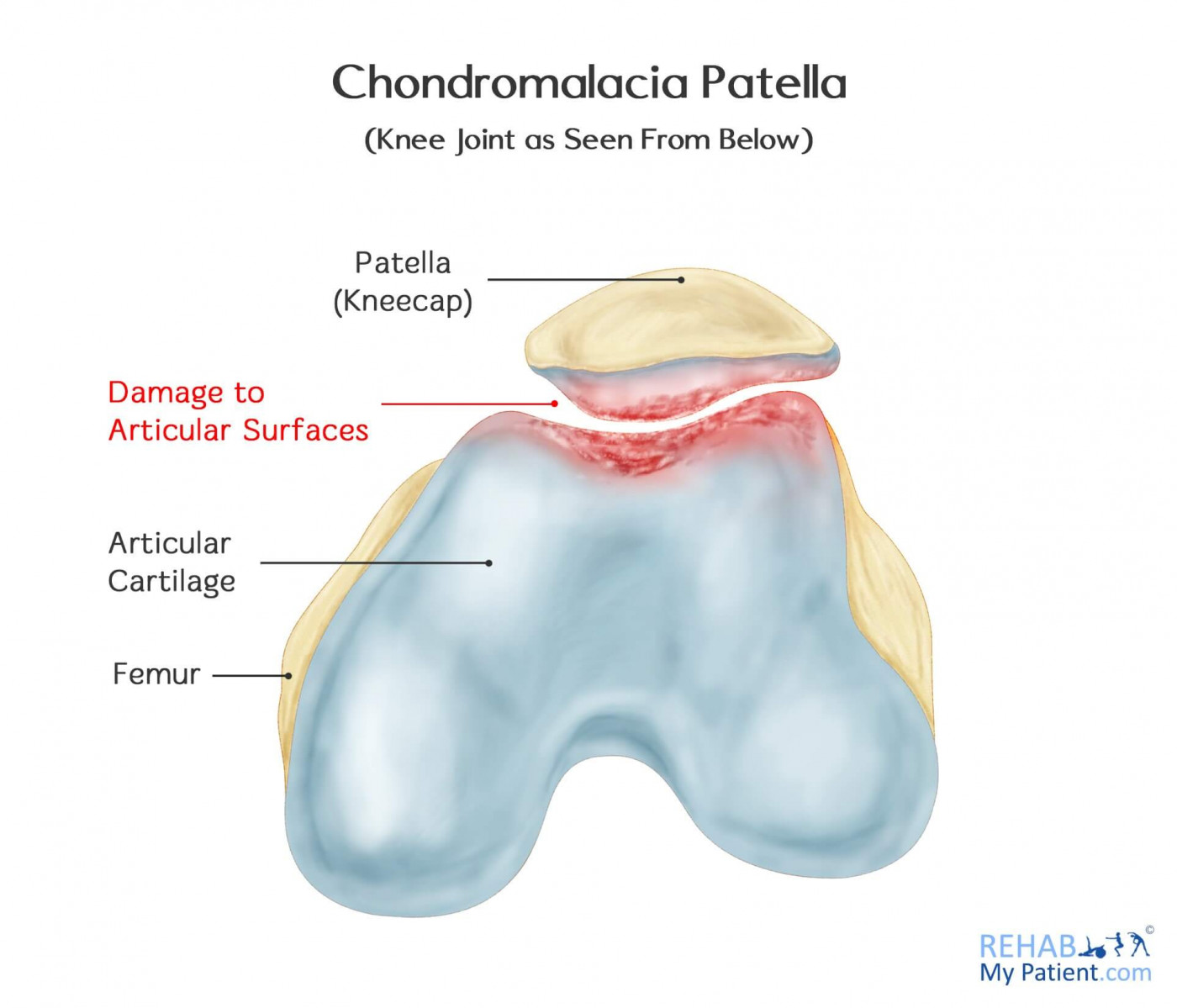Chondromalacia Patella
Posted on 13th Sep 2017 / Published in: Knee

The cartilage underneath your kneecap acts as a natural shock absorber. Injury, overuse and various other factors can lead to chondromalacia patella, which is a general term indicative of damage to the cartilage that lies underneath the kneecap. The main symptom is pain at the front of the knee on sitting, squatting, kneeling, stair climbing (up or down stairs), or sitting in a seat with poor leg-room.
Chondromalacia Patella Anatomy
Three bones form the knee joint:
- Femur – referred to as the thighbone, the tibia and femur form the main portion of the knee and it articulates with below the knee joint and above the hip joint
- Tibia – it supports the weight of the body below the joint, it is a thick bone that lies in the front of the lower part of the leg
- Patella – referred to as the kneecap, connected by tendons below and above the knee and provides protection on the front of the joint
Knee cartilage is a firm, smooth layer of tissue lining all of the bodies' joints. Two c-shaped cartilage discs line the knee on the inside called meniscus (plural: menisci). This cartilage allows the knee to move and stabilizes the knee to provide range of motion. It is composed of the lateral and the medial meniscus.

When knee motion is repetitively abnormal due to muscle imbalance or malalignment, the patella may maltrack and rub irregularly on the femur. The under-surface of the patella becomes inflamed and wears away. The patella usually maltracks laterally (outwards) due to a strong vastus lateralis (muscle on the outside of the thigh) and weak vastus medialis (muscle on the inside of the thigh).
How is It Diagnosed?
Diagnosis is made primarily by direct visualization. No one test is diagnostic, however, careful examination and evaluation results in high diagnostic accuracy. Plain X-ray examination is often suggestive and sometimes diagnostic of malalignment or abnormal wear. Specialized exam such as CT scan or MRI are generally not indicated except in instances where other disease is suspected. Although chondromalacia is an early form of arthritis, it rarely results in severe disabling symptoms.
How to Treat Chondromalacia Patella:
- Anti-Inflammatory Medication
Rest and anti-inflammatory medications might be recommended when the problem has occurred from overuse. Tylenol is useful for controlling pain if you are unable to take an anti-inflammatory medication.
- Physical Therapy
Modifying your activity, strengthening and flexibility are vital components of the rehabilitation program. Physical therapy in the early stages works to decrease inflammation and pain. An exercise program which strengthens the quadriceps muscles and stretches the hamstrings helps to balance the forces holding the patella central in the femoral groove. A strong quadriceps also dampens forces which would otherwise concentrate in the patella. Icing the knee for 10 minutes after aggravating activities may be beneficial. The use of foot arch supports may be beneficial if only to transfer forces acting on the knee.
- Taping or Bracing
Bracing the patella will help you perform exercises without all of the pain. Most of the braces are composed of a soft fabric, such as neoprene or cloth. Slide the brace onto the knee like you put a sleeve on your arm. Small buttress pads along the side of the patella will make sure it stays lined up with the femur groove.
Beyond bracing, you can secure the patella in place with tape. The therapist will adjust and apply the tape over the knee to make sure the patella is realigned. By bracing or taping the knee, it will help the patella stay aligned with the femoral groove. This will help to improve the muscle to make sure the patella stays within the groove. Patients often have less pain and an increased range of function with this type of treatment.
Tips:
- Active sports enthusiasts tend to be the ones most affected by this condition.
- Degeneration can occur due to the natural aging process.
- When the patella begins to suffer from wear and tear, the cartilage will begin to degenerate.
- If any part of the quadriceps weakens for any reason, an imbalance can occur.
- Weak muscles around the hip can indirectly affect the patella and cause joint pain.
Sign UP
Sign up for your free trial now!
Get started with Rehab My Patient today and revolutionize your exercise prescription process for effective rehabilitation.
Start Your 14-Day Free Trial